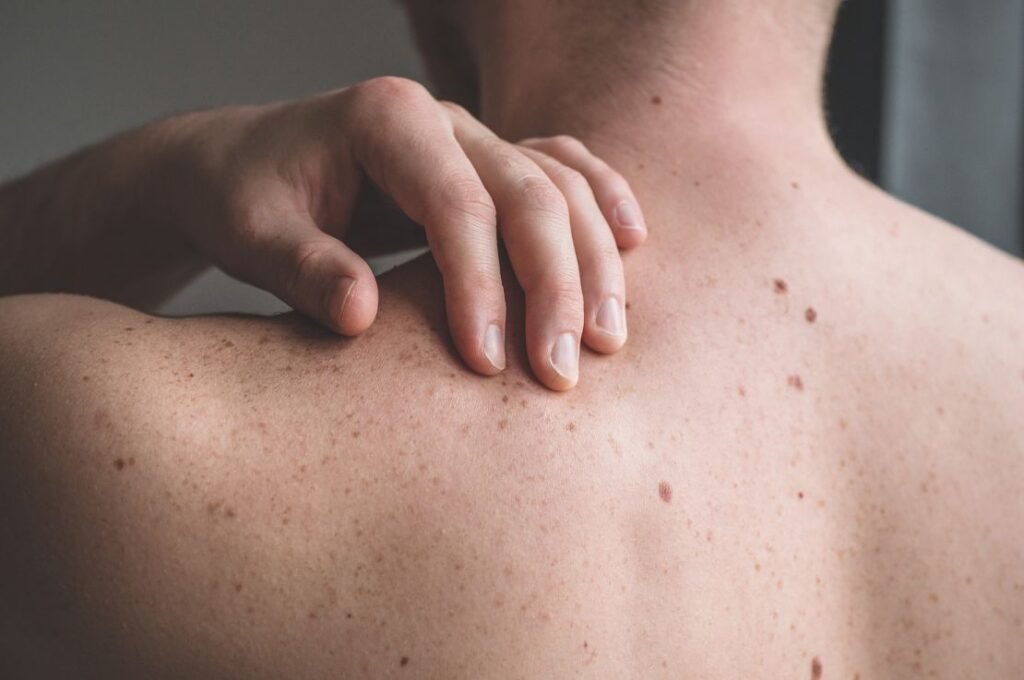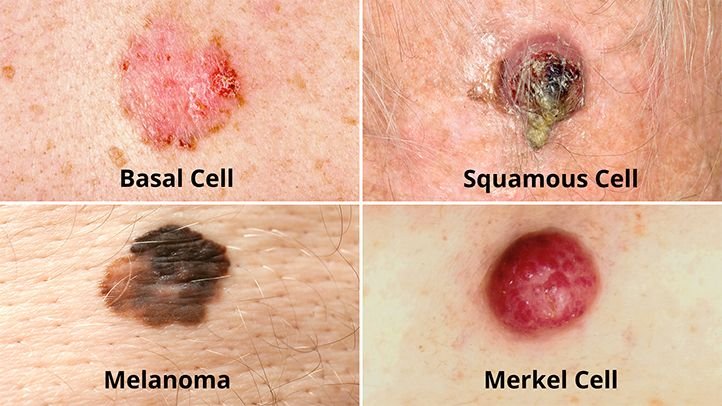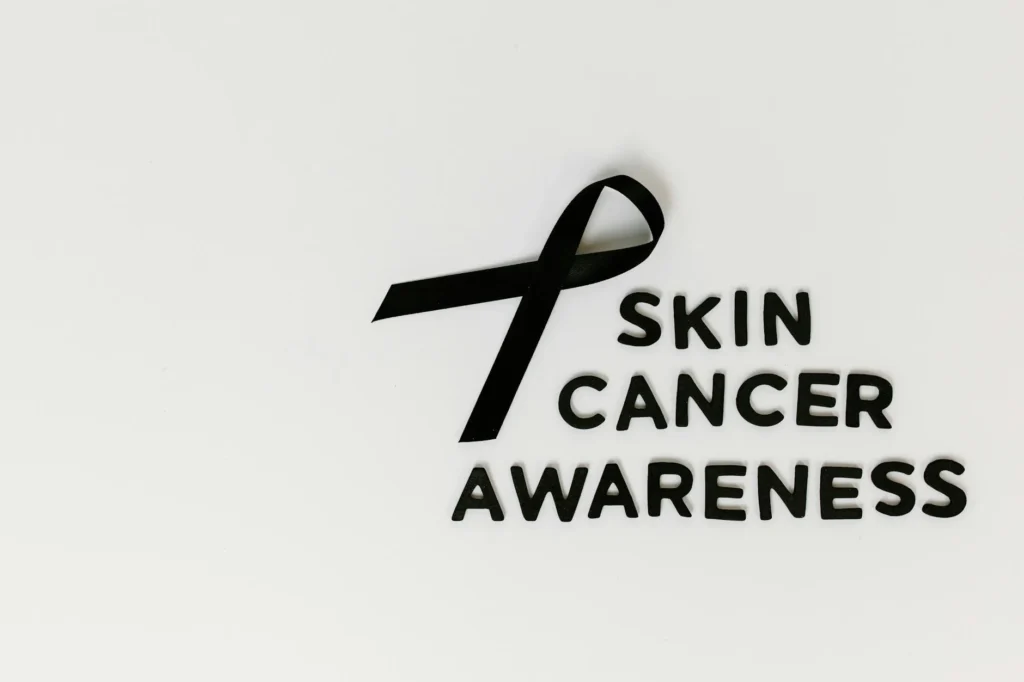Spot early signs of skin cancer like moles changing in size or color, unusual growths, or persistent skin changes. Early detection saves lives.
Early diagnosis of skin cancer is one of the easiest ways to ensure you do not die from the disease. Sadly, this disease is not well known and people usually remain asymptomatic, but if one learns to identify the first signs, it is easy to seek treatment. The first step, in this case, is figuring out what to actually be looking out for in the first place.
Understanding Skin Cancer
Skin cancer is a typical form of cancer that is characterized by growth of irregular cells in human skin tissues. This is realised when DNA in skin cells gets to be injured, which mostly results from ultraviolet (UV) radiation from sun exposure or from tanning beds. If they are not treated, such cells can interfere with adjacent cells and tissues and metastasize to other regions of the body.
Skin cancer is not a united disease; it has many types. They differ in their characteristics, signs and symptoms and even have different risk factors, hence the reason for this post. Stay tuned because estimations show that a single American in five will develop skin cancer at some point in their life.
Types of Skin Cancer
The three main types of skin cancer are:
1. Melanoma
This is the most serious form of skin cancer and it is the cause of a majority of skin cancer fatalities. Melanoma generally arose from pre-existing mole, which either changes in form, color, or size.It also may manifest with new lesion development on the skin that is initially black in color.
- Appearance: Melanomas have variable appearance, but they frequently are dark red, blue, grey or black and have an irregular outline. They may develop itch, bleed or become tender.
- Common Locations: This skin cancer can be found anywhere, but it occurs most often on the trunk in men and women’s legs.
- Key Fact: The earlier the diagnosis is made the better the chances of survival.
2. Basal Cell Carcinoma (BCC)
The least threatening type of skin cancer is called Basal cell carcinoma. The tumor is usually slow-growing and seldom metastasizes to other regions of the body but, when it does, it can badly invade the nearby tissues.
- Appearance: BCC usually manifests itself clinically as a painless, shiny, pearly papule or a rosy red, flat lesion.
- Common Locations: This type of skin carcinoma is usually localized on parts of skin that are most often exposed to the sun— the face, neck, and the shoulders.
- Key Fact: It has however been determined that early detection will help avoid very massive tissue damage.
3. Squamous Cell Carcinoma (SCC)
Squamous cell carcinoma is the second most common skin malignancy. While it is more aggressive than BCC, it is highly treatable if diagnosed and treated in their early stage.
- Appearance: SCC may develop as a rough thick scaling, skin lesion resembling a wart or even as hard red nodule.
- Common Locations: It commonly occurs on the ears, hands, lips and other body parts that are most likely to come into contact with sunlight.
- Key Fact: When treated early, SCC especially does not have a tendency in spreading to other parts of the body.
4. Rare Types of Skin Cancer
Several subtypes exist and some of the more unusual forms include Merkel cell carcinoma and dermatofibrosarcoma protuberans kinds of skin cancer. Though less frequent, such types call for certain sorts of therapy and better monitoring.

Risk Factors
Several factors increase the risk of developing skin cancer, including:
- Prolonged UV Exposure: For instance, tanning by staying in the sun without the use of sunscreen or using tanning beds puts you at a very high risk. UV radiation causes skin cell DNA to form irregular growths.
- Fair Skin: Consequently, light complexioned Caucasians with fair hair and blue eyes – which are due to inheritance of low melanin – are especially vulnerable to such damage as skin cancer.
- Family History: One’s family history can also help predispose you to skin cancer; if relatives who went through the same pedigree as you have been diagnosed with melanoma.
- Age: Skin cancer in particular is known to be fostered by sun exposure which accumulates over a certain period of age.
- Immune System: Suppression Immunocompromised person includes those who have received an organ transplant, have HIV, cancer or are receiving chemotherapy are at a higher probability of developing it.
- High Altitude or Equatorial Living: The elderly, and those living at high altitude or in close proximity to the equator, get exposed to higher UV radiation and therefore higher skin cancer risk.

Early Symptoms of Skin Cancer
It is always important to pay attention to strange changes on our skin. In general, timely diagnosis of the disease is much better than in further stages. Here are some key symptoms to look for:
1. Changes in Moles
Moles that are asymmetrical, have irregular edges, or change in color might be warning signs of melanoma. Dermatologists often use the “ABCDE rule” to identify suspicious moles:
- A: Asymmetry – One half of the mole doesn’t match the other.
- B: Border irregularity – Edges are notched, uneven, or blurred.
- C: Color variations – Different shades of brown, black, red, or blue within the same mole.
- D: Diameter – Larger than 6mm (about the size of a pencil eraser).
- E: Evolution – Changes in size, shape, or color over time.
2. New Growths on Skin
Any new bump, sore or patch of skin that fails to heal may be basal or squamous cell carcinoma. These growths are commonly benign and do not produce symptoms such as pain.
3. Unusual Skin Changes
Take note of skin parts that is perhaps irritated, red swollen, crack, bleed or scab and you cannot explain why it is so. Such signs may indicate skin cancer in its early stages.
4. Dark Streaks
Under Nails Melanoma may present with black line or black spot starting from the nail plate, either proximally or distally, especially with nail deformity or growing lesion.
5. Persistent Sores
Abrasions that do not heal or are recurrent wounds, which heal and then could reopen, are characteristics of basal cell carcinoma.
6. Skin Texture Changes
Thick skin or leathery skin especially in areas exposed to sunlight may be a sign of precancerous changes or skin cancer.

Self-Examination Tips
One of the ways of early detection of skin cancer entails self examination as the ADL stresses. Here’s how to do it effectively:
1. Regular Skin Checks
- Stand in front of a mirror so that you can cover all your body parts including those you cannot easily see like the back of the head, scalp and soles of feet.
- See how many new mole, growths or changes in the colour or size in the previous moles or marks.
2. Document Changes
- Clinicians should photograph any lesions related to moles and spots with a view to reviewing the changes over a period of time.
- Record new or changing symptoms that will be useful when consulting doctors.
3. Partner Assistance
- Pose to another person to help you check the areas which are hard to see like your back or your head. This does away with the possibility of missing a spot here and there.
4. Consult a Dermatologist
If you notice anything unusual or persistent, make an appointment with a dermatologist. Skin cancer is most treatable when diagnosed early.
Prevention Strategies
While no prevention method is 100% foolproof, you can significantly lower your risk with these measures:
1. Sun Protection
- Apply equal to or more than SPF 30 everyday, whether the day is sunny or not.
- It is important to reapply the sunscreen after two hours, and after swimming or perspiring.
- Use hats with large brims, eyeglasses, those clothes that have built-in protection from UV light when out in the sun.
2. Avoid Tanning Beds
- Premature exposure to skin radiation causes skin cancer and indoor tanning leads to it.
- Just do not consume them at all if you want to see an improvement in your skin health.
3. Seek Shade
Avoid exposure to the sun’s rays; especially between 10 a.m. and 4 p.m. as this is when the UV light is most penetrating.
4. Maintain a Healthy Diet
It is important to limit your exposure to UV light and eating a well balanced, antioxidant rich diet may can also support skin health and healthy skin.
5. Regular Check-Ups
It is also recommended that people should get their skin checked by a dermatologist once a year.

Conclusion
Skin cancer will therefore not harm you when you educate yourself on the early symptoms and ensure that you protect yourself. Skin alterations, particularly of moles, new growths, unending itch or bleed should not be taken lightly. Take regular self-checks and when something feels amiss, talk to your doctor. Always go for effective and bright sun protection and always go for the habits that would help in skin health in the long run. It is your guard up that should protect you.
Therefore, skin cancer is a preventable, detectable and if diagnosed on time, it can also be treateable. Ways on how you can protect yourself against skin cancer begin today and do not wait till its too late.
Remember, your skin is your body’s largest organ. Caring for it is not just about appearance but ensuring your overall well-being for years to come.
FAQ’s
How can I tell if a mole is cancerous?
To identify a potentially cancerous mole, use the ABCDE rule:
- A: Asymmetry – One half of the mole doesn’t match the other.
- B: Border – Irregular, notched, or blurred edges.
- C: Color – Uneven shades of brown, black, red, or blue.
- D: Diameter – Larger than 6mm (about the size of a pencil eraser).
- E: Evolving – Changes in size, shape, or color over time.
Who is at the highest risk of developing skin cancer?
People with the following characteristics or conditions are at higher risk:
- Fair skin, light hair, and light eyes.
- A history of sunburns or prolonged UV exposure.
- A family history of skin cancer.
- Weakened immune systems.
- Older age or individuals with numerous moles.
Are all skin cancers life-threatening?
Not all skin cancers are life-threatening, especially when caught early. Basal Cell Carcinoma (BCC) and Squamous Cell Carcinoma (SCC) are highly treatable and rarely spread. However, Melanoma, if left untreated, can spread to other parts of the body and become life-threatening.
How can I reduce my risk of skin cancer?
To reduce your risk:
- Apply sunscreen daily with SPF 30 or higher.
- Wear protective clothing, wide-brimmed hats, and sunglasses.
- Avoid tanning beds.
- Stay in the shade during peak sun hours (10 AM - 4 PM).
- Conduct regular skin self-examinations and see a dermatologist annually.
How often should I perform a self-examination for skin cancer?
You should perform a thorough skin self-examination once a month. Check your entire body, including areas that are hard to see, like your back, scalp, and the soles of your feet. Use a mirror and document any changes in your skin.
Can skin cancer occur in areas not exposed to the sun?
Yes, skin cancer can develop in areas that are not typically exposed to the sun, such as the soles of your feet, under fingernails, or even inside your mouth. This is particularly true for melanoma, which can occur anywhere on the body.
What should I do if I notice a suspicious spot on my skin?
If you notice a new or unusual spot, or changes in an existing mole, consult a dermatologist as soon as possible. Early diagnosis is key to effective treatment.
Are tanning beds safer than natural sunlight?
No, tanning beds are not safer than natural sunlight. They emit UV radiation that increases the risk of all types of skin cancer, including melanoma.
Is skin cancer preventable?
While it’s impossible to completely eliminate the risk, you can significantly lower it by practicing sun protection, avoiding tanning beds, and staying vigilant with regular skin checks.
What are some rare types of skin cancer I should know about?
In addition to Melanoma, BCC, and SCC, there are rare types such as:
- Merkel Cell Carcinoma: An aggressive cancer that appears as firm, shiny nodules on the skin.
- Kaposi Sarcoma: Associated with weakened immune systems and characterized by purplish lesions.
- Sebaceous Gland Carcinoma: A rare cancer of the oil glands that appears as painless nodules, often on the eyelids.
Can children get skin cancer?
Although rare, children can develop skin cancer, especially if they have genetic conditions like xeroderma pigmentosum or extensive UV exposure. Parents should ensure their children wear sunscreen and protective clothing when outdoors.



